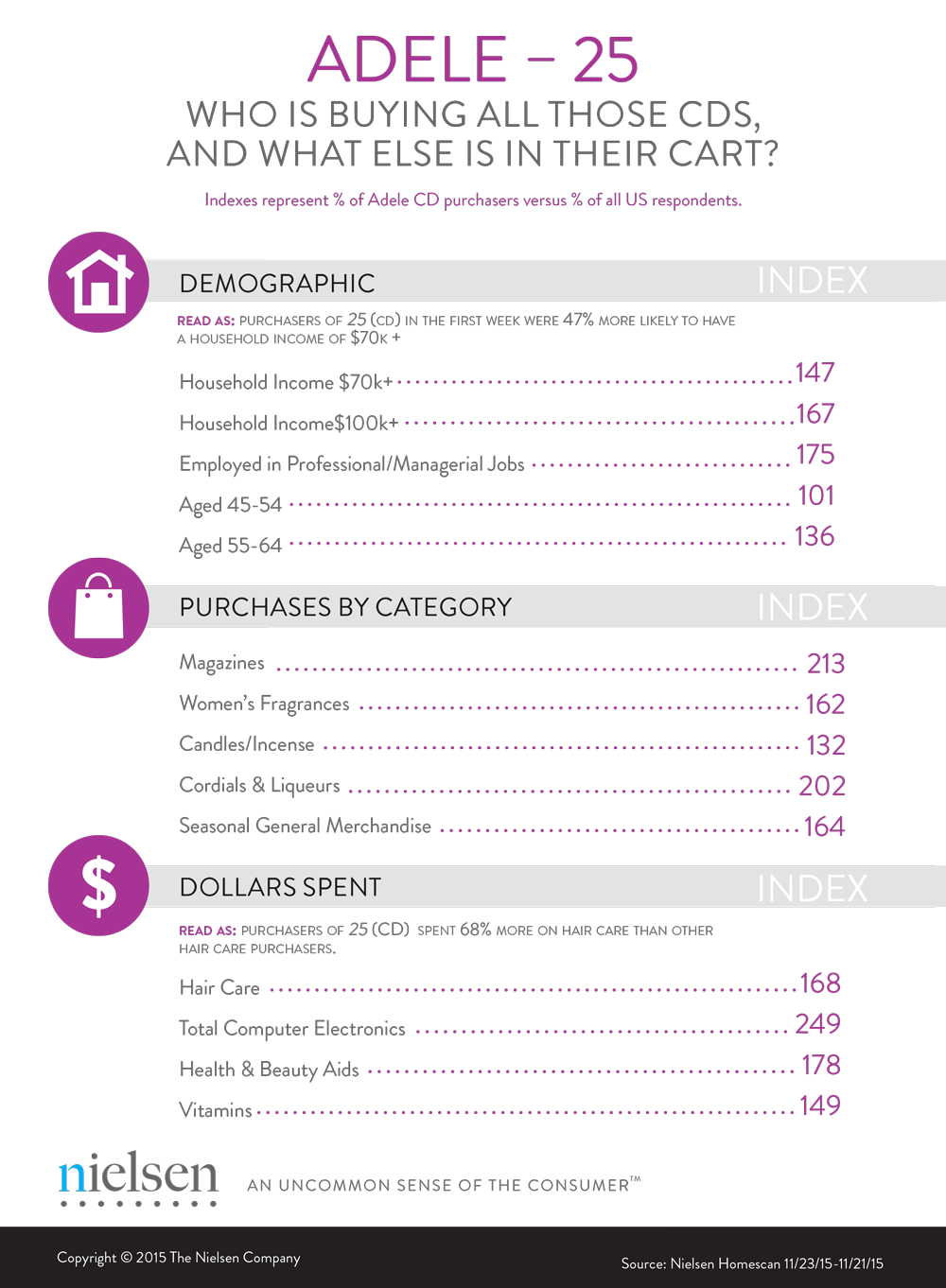With sales continuing to soar for Adele’s album 25, pundits continue to debate the driver behind this sensation. Her incredible talent notwithstanding, what is it that has motivated the nearly 5 million Americans that have already gone out and bought the album at a time when album sales are in steep decline? Is it the wide appeal of the music? The way the album was marketed and sold? Or is it some characteristic of her fans themselves that helped drive this phenomenon?
Of 3.38 million 25 albums sold in the first week of release, 51% of were physical CDs. To better understand these fans, Nielsen used its HomeScan panel, which tracks the shopping habits and behaviors of 125,000 households that are demographically and geographically representative of the U.S. population, to learn more about people who actually purchased a CD of 25 the first week it was available (and not just state they are Adele fans). Using Nielsen HomeScan’s analytic capabilities, we were able to uncover real demographics for these buyers and measure their other shopping purchases for the previous year to generate a consumer profile of these fans.
The early Adele CD purchasers were more likely to be from high-income households, empty nesters and aged 55-64—a demographic not normally closely examined in the Millennial-fixated entertainment industry. With their higher incomes, these consumers are more likely to buy personal items like fragrances, toiletries and items for the home more frequently than the general population, and they spend more per household on these items compared to other purchasers, suggesting higher-quality purchases.
According to the HomeScan panel, Adele’s CD purchasers were more likely to be employed full time in professional/managerial roles and, as such, have higher than average incomes. Over 56% of them have household incomes of $70,000 (compared with 38% of total U.S. households) and 38% have household incomes of over $100,000 (compared with 23% of total U.S. households). With their higher incomes, they spend 48% more at retail than the general population: a total of $5,505 each year, compared with the average $3,713 for total U.S. households.
So what else is in these shopping carts? Adele CD buyers over-index for nonessential comfort/mood-related items—not unlike an Adele album—such as magazines, women’s fragrances, men’s toiletries, candles and incense, seasonal merchandise, cordials and liqueurs, and liquor. They also over-index for healthier food items like fresh vegetables, herbs and fruit. They spent more dollars on computers and electronic products, health and beauty aids and hair care compared to other buyers of those items, suggesting they might not just be buying more but also be buying higher-quality, more expensive items.
The fact that Adele has sold millions of albums in a matter of weeks, in an era when many thought this was no longer achievable just shows there is a base of music consumers, perhaps not of the usually scrutinized demographic, that can be activated with the right musical offering. Learning more about their overall consumer behaviors can help marketers develop the right activation strategies to connect with these fans.




